John H. Ziegler

II & The Making of Carolina


PLUS: Draining the Swamp, A Day or an Hour of Virtuous Liberty…, Diamond Shoals Light Ships, Beloved Hats, Thoughts of Fall, 100th Birthday of Max Roach!, AND What’s Happening at Affiliate Museums


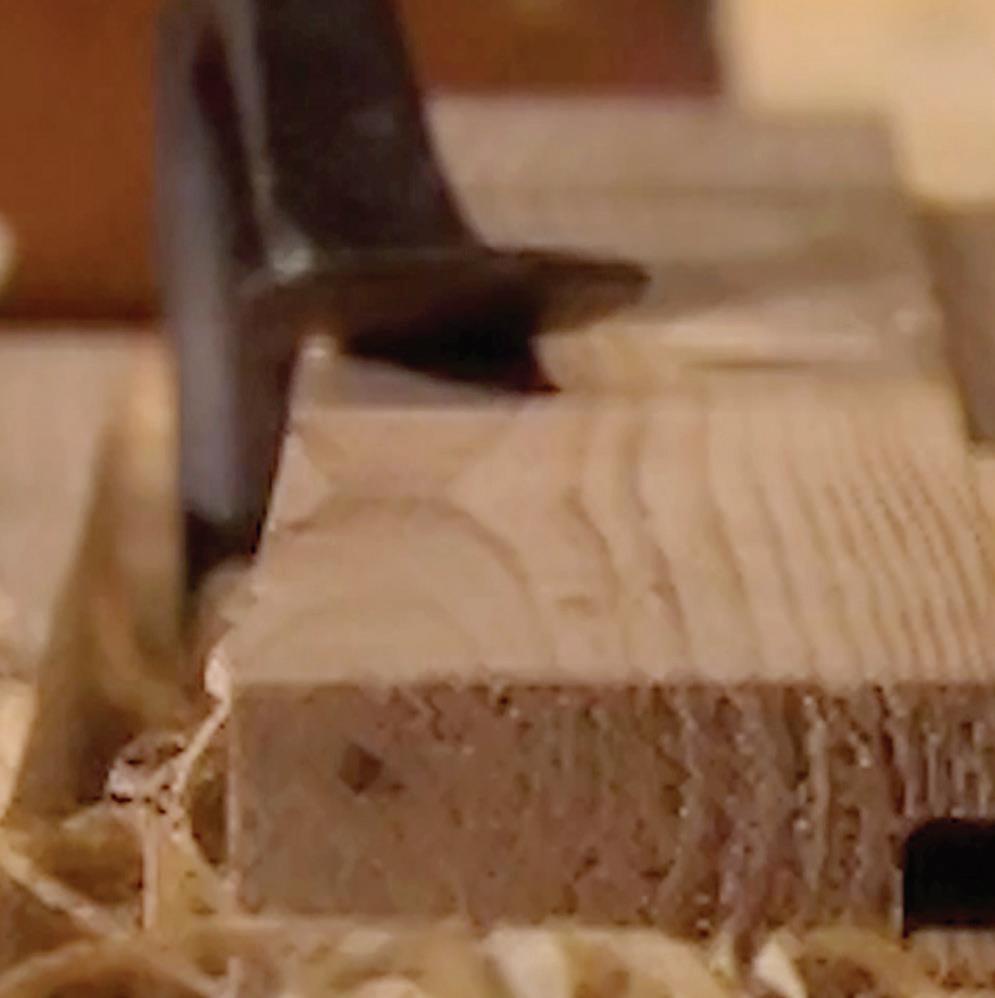
Fall/Winter 2023 | Vol. 47 Experience • Explore • Engage A PUBLICATION OF THE FRIENDS OF THE
Charles
pg. 18 pg. 12 pg. 7
King
State of North Carolina
Roy A. Cooper, Governor
Mark Robinson, Lieutenant Governor
Department of Natural and Cultural Resources
Reid Wilson, Secretary
Office of Archives and History
Darin Waters, Deputy Secretary
Division of State History Museums
North Carolina Museum of History
Kenneth B. Howard, Director
The Museum of the Albemarle is a part of the Division of State History Museums.
Friends of the Museum of the
Albemarle Board Of Directors
Johny Hallow, President
Kim Baumbaugh, Vice President
Douglas Gardner, Treasurer
Penny Leary-Smith, Secretary
Chris Barber, Josh Bass, Heidi Bonaslawski, Bernetta Brown, Joyce Buffaloe,
Ella Fields Bunch, Kim Castle, David Clegg,
Melinda DelGarbino, David Harris, Linda Hofler, Tess Judge, Geraldine Langford, Freda Nelson, Brian Phelps, Jude Roberts, Steven Rudey, George Thomas, Katherine Wassink
Don Pendergraft, Ex-Officio
Barbara Putnam, Ex-Officio
Museum of the Albemarle Staff
Don Pendergraft, Director of Regional Museums
Barbara Putnam, Operations Manager
Wayne Mathews, Facilities Manager
Wanda Lassiter, Curator
Lori Meads, Education Curator
Carrie Barker, Collections Specialist
Marjorie Berry, Public Information Specialist
Kathy Bowman, Public Information Specialist
Kelly Boyd, Security/Event Rental Assistant
Rosana Castilho, Event Rental Coordinator
Martine DeLizza, Public Information Specialist
Noah Edwards, Artifact Collections Assistant
Bobby Elliott, Security/Event Rental Assistant
Matt Ferrell, Carpenter
Noah Janis, Museum Educator
Andrew Nelson-Redondo, Exhibit/Graphic Designer
Lynette Sawyer, Museum Specialist/AV Technician
William Seymore, Facilities Maintenance
Rebecca Stiles, Administrative Assistant
Mary Temple, Museum Gift Shop
Paul Vincent, Facilities Maintenance
Renee Wood, Public Information Specialist
In the Exhibitions
Our Story: Life in the Albemarle
The Albemarle region represents a unique place—half land, half water. The story of this place comes alive in Our Story, a tale of how our communities have adapted to the challenges and opportunities of our unusual home.
Our Story: Audio Tour
Virtual tour provides in-depth overview of the region and its progression through various eras of transportation. Now available in English and Spanish.
North Carolina Shad Boat
The official State Historical Boat of North Carolina was first built in the early 1880s by George Washington Creef of Roanoke Island. The shad boat on display here at MOA was constructed in 1904 by renowned boat builder and decoy carver Alvirah Wright.
Working Birds: Decoys and Their Carvers Lobby exhibit showcasing decoys from the museum’s collection.
Albemarle Profile:
Staff Sergeant Dorothy Bellamy
(Closes January 10, 2024)
Small case display focusing on the military career of Perquimans County resident Dorothy Bellamy.
Century Farms of Northeastern North Carolina Multimedia display of photographs of centennial and bicentennial farms of northeastern North Carolina.
Freedom! A Promise Disrupted: North Carolina, 1862-1901
(Closes February 7, 2024)
This traveling exhibit, on loan from the North Carolina Museum of History, depicts the struggle that newly freed African Americans faced to maintain their freedom in the post-Civil War and Reconstruction Era of North Carolina.
FRONT COVER: Preserving the Jackson House, 2006
Guardians of the Land:
Discovering Indigenous Americans
A children’s exhibit that focuses on the regional tribes of northeastern North Carolina.
Pollination Investigation
(Closes March 23, 2024)
Poster display from the Smithsonian Institution Traveling Exhibition Service that explores the who, what, when, where, why, and how of pollination by interpreting the unique relationship between pollinators and flowers.
Rock of the Eye: Boatbuilding Traditions
Around the Albemarle Sound
Exhibition highlighting boatbuilding traditions and the crafters who helped shape the Albemarle region.
Crafted from Wood
(Opens November 11, 2023)
This exhibition explores the gift of crafting treasures from wood while highlighting the training and abilities of the crafter.
Back to 1970s Christmas
(Opens December 2, 2023; Closes January 6, 2024)
Visit a room dedicated to the decade that transformed and propelled us into the present.
Hats and their Accessories (Opens January 31, 2024)
Small case display highlighting hats from the museum’s collection
We Built This: Black Architects and Builders in North Carolina (Opens March 6, 2024)
Master carpenter and housewright, Russell Steele makes the rabbet on a piece of window sash with a filister plane. The piece is sitting in a sticking board that holds the piece in place while a small amount of wood is removed to create a ledge where a glass pane and glazing is applied. You can see his work on the restored Jackson House and Proctor Smokehouse in the Our Story: Life in the Albemarle exhibit. Courtesy Museum of the Albemarle
This traveling exhibit, from Preservation North Carolina, is “part of a multifaceted educational program about the history and legacy of Black builders and craftspeople in North Carolina.” IT’S
EASY TO VISIT OUR WEBSITE
1. Open camera or QR code reader on your phone
2. Point your camera at the QR code
3. Tap “Open Link” to access our website
2
e Gateway
• Explore • Engage
Experience
In this Issue
4 DRAINING THE SWAMP, HOW THE ALBEMARLE REGION WAS FORMED (NOT A POLITICAL COLUMN)
5 A DAY OR AN HOUR OF VIRTUOUS LIBERTY…
Explore Roanoke Island as a bastion of liberty to a freedmen colony.

6 DIAMOND SHOALS LIGHTSHIPS
Learn of the hardships of warning sailors of the infamous Diamond Shoals of North Carolina since 1803.

7 CRAFTED FROM WOOD
This year’s feature exhibition explores the gift of crafting treasures from wood while highlighting the training and abilities of the crafter.
10 SUMMER INTERNSHIP
Meet our intern, Odis Gadson.



11 BELOVED HATS

See how noted historian Thomas R. Butchko, former curator of Museum of the Albemarle, will be remembered in an upcoming exhibition.
The Gateway
Amber D. Revels-Stocks, Copy Editor Andrew Nelson-Redondo, Exhibit/Graphic Designer
Contributors
Carrie Barker, Noah Edwards, Odis Gadson, Johny Hallow, Noah Janis, Wanda Lassiter, Lori Meads, Andrew Nelson-Redondo, Don Pendergraft, Barbara Putnam, Rebecca Stiles, Paul Vincent
12 JOHN H. ZIEGLER
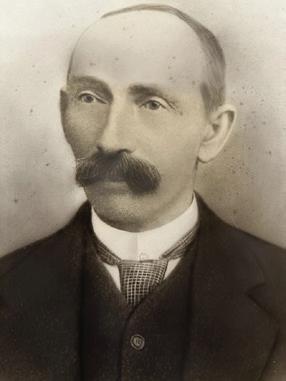
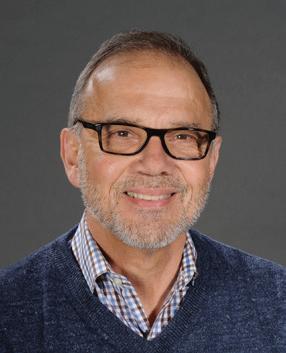
Delve into a family cabinetry business that served the Albemarle community for nearly a century.

13 EDUCATIONAL PROGRAMMING AT A GLANCE
Exciting events coming this season.
14 MARK YOUR CALENDAR TO CELEBRATE THE 100TH BIRTHDAY OF MAX ROACH!

15 WHAT’S HAPPENING AT AFFILIATE MUSEUMS
Exciting things are happening at our sister museums; see what’s in store.
18 KING CHARLES II & THE MAKING OF CAROLINA

Explore the events which happened about 360 years ago in 1663, and how the Albemarle region and North Carolina were born.
20 PRESIDENT’S REPORT
Our FOMOA President shares his reflection on museum happenings.
21 MEMBERSHIP
Thank you for all your support.
23 SPONSOR RECOGNITION
Thank you to our community support.
The Gateway is published two times per year by the Friends of the Museum of the Albemarle. Published articles do not necessarily represent the views of the Department of Natural and Cultural Resources or any other state agency. © 2023 by the Museum of the Albemarle
For information on making a contribution to the Friends of the Museum of the Albemarle or to sponsor an issue of The Gateway, call 252-335-1453.
3
Draining the Swamp How the Albemarle Region Was Formed (Not a Political Column)
Traditionally in the fall and winter, we celebrate the harvest by picking crops, such as soybeans, cotton, and peanuts. The region is blessed with soil composed of peat moss and sand from ancient swamp remnants of an ancient ocean. About 12,000 years ago, the ocean dissipated and formed the rivers of North, Pasquotank, Little, Perquimans, Chowan, and Roanoke, connecting and spilling into the Albemarle Sound. The end of the Ice Age was a formative time for North America, especially coastal North Carolina.
The primeval Albemarle was primarily a large inland ocean, a turbulent body of water stretching from Rocky Mount and flowing east into the Atlantic Ocean. The current had a force strong enough to push soil and sand into a delta, forming the Outer Banks. The Paleo-Indian tribes, who were nomadic hunter-gathers, would later follow the waterways and develop their societies into the Woodland culture on
the lands that emerged as the waters subsided. These were the people who began farming the land and cultivating crops. Their basic staples were corn, pole beans, and squash; these were called the Three Sisters and were planted together. The corn was planted first to serve as an arbor, later the pole beans were planted at the base as vines and climbed the corn stalk. The last to be planted was squash. The large leaves blocked sun and photosynthesis preventing grasses and weeds from growing and depleting nutrients in the soil. However, they cultivated and grew one special weed for ceremonial and medicinal purposes, tobacco.

The Albemarle region is half land and half water. The Dismal Swamp remains as evidence of the slow process of draining. It was about two-thirds larger in area before settlers from Virginia drifted down and continued the farming traditions. They needed more land to produce table crops and tobacco—the precious cash crop that many say jump-started North Carolina’s economy and made the world take notice. The early founders went as far as to name the state’s capital after Sir Walter Raleigh, who popularized the use of tobacco by the English. Raleigh was instrumental in the beginnings of English colonization of North America. He never set foot on this continent but convinced Queen Elizabeth I to support and fund the First Colony and the great adventure that would become North Carolina.
The museum is poised and ready for the cooler weather with many programs for children and adults. Please come and visit us, participate in programs, or attend events and exhibits. We are celebrating Century Farms of Northeastern North Carolina. While you’re here you can Experience, Explore, and Engage with the past and enjoy discovering more about how we became us.
See you in the museum,
Don Pendergraft, Director of Regional
Museums

The Gateway Fall/Winter 2023 - Vol. 47
“NATIVE AMERICAN VILLAGE OF SECOTON,” 1590
These are engravings by Theodore de Bry, who modeled his work after John White’s watercolors.
Courtesy North Carolina Collection, University of North Carolina at Chapel Hill
4 Director's Report
A Day or an Hour of Virtuous Liberty…
By Noah Edwards, Collections Assistant
In 1862 Roanoke Island was occupied by Union forces, who freed the local enslaved population. Word quickly spread, “If you can cross the creek to Roanoke Island, you will find ʻsafe haven.’” The population of formerly enslaved people soon surpassed 3,000, precipitating the colony’s official establishment in 1863.
The colony introduced the steam engine and a sawmill to Roanoke Island. Colony members constructed nearly 600 homes as well as schools decorated with quotes like “this school
is for the free” and “a day or an hour of virtuous liberty is worth a whole eternity of bondage.”
The colony struggled to receive rations for its inhabitants due to the island’s remote location and low male population. Many men had enlisted with the Union, leading to the community’s greater reliance on government support.
Following the Civil War, Unionoccupied land had to be returned to its original owners. As land was reclaimed and government support dwindled,
the colony’s population shrank substantially. By the time it disbanded in 1867, the colony’s population had decreased by over half.
The Roanoke Island Freedmen’s Colony was a bastion of liberty due to the unprecedented level of freedom it allowed its inhabitants.
To learn more about the Roanoke Island Freedmen’s Colony, please visit Freedom! A Promise Disrupted: North Carolina, 1862–1901 at the Museum of the Albemarle.
 A PHOTOGRAPH OF A FREEDMEN’S SCHOOL IN NEW BERN, TAKEN BY JOHN D. HEYWOOD, circa 1868 Courtesy Collection of the Smithsonian National Museum of African American History and Culture
A PHOTOGRAPH OF A FREEDMEN’S SCHOOL IN NEW BERN, TAKEN BY JOHN D. HEYWOOD, circa 1868 Courtesy Collection of the Smithsonian National Museum of African American History and Culture
History 5
Illuminating the Treacherous Diamond Shoals
By Noah Janis, Educator
The dangerous waters along the Outer Banks have claimed more than 2,000 ships, earning the popular nickname “Graveyard of the Atlantic.” At Cape Hatteras, north and southbound ocean currents collide and form the dreaded Diamond Shoals, a series of shifting, submerged sandbars that stretch miles into the Atlantic. When it comes to marking those shoals, the iconic Cape Hatteras Lighthouse comes to mind. But over the past two centuries, many lesserknown lights and gadgets have also warned mariners of the treacherous seas.
The original Hatteras lighthouse, lit in 1803, proved woefully inadequate. Consequently, in 1824, one of the country’s first lightships was stationed 14 miles offshore along the outer shoals. These vessels were effectively floating lighthouses, anchored securely near dangerous areas, with beacons affixed atop their masts. By the nature of their assignment, lightships faced turbulent seas and fierce storms, but the first Diamond Shoals lightship had more than its share of misfortune. It broke loose from its moorings three times in as many years, the last time ending up beached on Ocracoke Island. After this unfortunate ending, it would be another 70 years before another lightship arrived at the shoals.
In the meantime, there were numerous attempts to mark the area with warning devices—buoys being the most popular. None proved successful, including a whistling buoy that saw its whistle stolen. An unmanned bell boat lasted four months in 1852 before breaking its anchorage and disappearing in a storm. Later in the 19th century, Congress appropriated up to $500,000 to build a lighthouse on the shoals. Engineers designed a massive, watertight caisson to sink into the sandbars, atop which they could affix a light. Workers lowered the device into the water in 1891, but
lightship, Diamond Shoals Lightship No. 69 (LV-69), that reached its lonely offshore station in 1897. The 1899 San Ciriaco hurricane beached this vessel, much like its predecessor, but it was refloated and again took up its post. Over the years, LV-69 alternated its station with two other lightships, LV-71 and LV-72, which were sometimes accidentally rammed by passing boats. Then on August 6, 1918, LV-71 witnessed an Imperial German submarine, U-140, attack a nearby freighter. It immediately dispatched a radio warning to nearby vessels, which U-140 intercepted. The Germans allowed the lightship crew to abandon ship, and sunk LV-71 with its deck gun.
Successive Diamond Shoals lightships continued at their isolated post until 1966, when a Texas-tower lighthouse—reminiscent of an oil rig—was built atop the shoals. It was deactivated in 2001 and is now privately owned.

undercurrents quickly washed sand away from its base and the caisson tilted precariously. Then a strong storm damaged the structure beyond repair.
After abandoning a subsequent plan to construct a skeleton tower lighthouse, Congress finally agreed to fund another
The Gateway Fall/Winter 2023 - Vol. 47
History 6
DIAMOND LIGHTSHIP Courtesy Museum of the Albemarle
Exhibits





circa 1880


Adult chairs feature shallow arch splats, double banding on posts, and plainwoven seats. A draw knife, draw bench, spring pole lathe, chisel, mallet, shaving horse, froe, and bit and brace would have been used to craft these chairs.



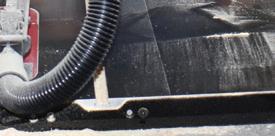
 By Wanda Lassiter, Curator
By Wanda Lassiter, Curator

Throughout time, carvers, cabinetmakers, furniture makers, and carpenters have been crafting objects to serve as functional, social, and aesthetic pieces of work. Signatures or marks left by the craftsperson, whether incised or scratched or those of chalk, paint, pencil, or ink, allow a piece of wood to be transformed into a reflection of society, culture, economics, and trade. The exhibition Crafted from Wood, which opens Saturday, November 11, 2023, explores the gift of crafting treasures from wood while highlighting the training and abilities of the crafter.
Cacace owns her own business of custom carpentry, remodeling, and designing. She is known as “a true and generous woman that believes in thanking the women who blazed a trail for her.”



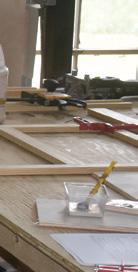






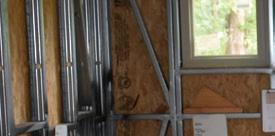



 JOSEPH E. BRITTLE LADDERBACK COMMON CHAIRS,
Courtesy Museum of the Albemarle
ANGELA CACACE, 2023
Courtesy Angela Cacace
JOSEPH E. BRITTLE LADDERBACK COMMON CHAIRS,
Courtesy Museum of the Albemarle
ANGELA CACACE, 2023
Courtesy Angela Cacace
Feature
7
Exhibits
Housewrights, joiners, and carpenters intermingled with cabinet and furniture makers to craft homes and businesses throughout the Albemarle region. Artisans often served dual roles to maintain a living, many as farmers. Tools, hardware, and finishing materials were purchased from regional merchants or other artisans’ estate sales. These highly skilled craftspeople built homes, schools, businesses, and churches, all components that create a community. Decorative or plain trim work was completed for pay and passion.
The exploration of the material culture of craftspeople reveals they were influenced by styles from abroad, fellow crafters, and their sheer determination to succeed in this field. This exhibit will allow visitors to explore, experience, and engage with modern wood crafts to learn how carvers use wood to express their culture, religion, profession, and identity or to connect to their communities.
The exhibit features objects that were crafted in 18th-century furniture-making shops of Thomas White, William Seay, Samuel Black, and Micajah Wilkes. Tools on view will include those used by carpenter and master brick mason Elisha Overton and the Ziegler family of cabinetmakers and undertakers. Families like the Dunbars of Tyrrell County, the Badhams of Edenton, and the Sharrocks of Northampton and Bertie Counties left their mark on our society through the prominence of their crafts. Works crafted by Thomas Day, Henry and Wilson Bruce
SOMERSET PLACE CARPENTER’S SHOP INVENTORIES, 1839

Inventories include planes, chisels, calipers, saws, a rounding knife, squares, a glue kettle with brush, axes, plumb levels, turning gouges, hammers, and wooden patterns.
Courtesy Somerset Place State Historic Site, Creswell, and State Archives of North Carolina
CHEST OF DRAWERS, circa 1810

Built by a member of the Sharrock family, this piece contains a later drawer partition bearing the partial name of Stephen A. Norfleet, used at Woodbourne, his father’s home. William Seay constructed that home.
Courtesy Thomas R. J. Newbern
e Gateway
8
Exhibits
Evans, and Angela Cacace are among those representing fine North Carolina craftsmanship. See carvings by Chowanoke artist Gerry Lang, Hertford County artist Arliss Watford, and Currituck County artist Joann Drake.
This exhibit a cknowledges the individuals and organizations tirelessly working to acquire, restore, and save furnishings and structures for the rich treasures that they are. Housewrights and master carpenters who hone their restoration skills to help preserve homes, churches, and other structures and the regional cabinetmakers offering workshops and classes that allow participants to use traditional techniques and tools from centuries ago. Businesses that teach carpentry and cabinetmaker skills and the architectural historians and expert furniture historians who research and publish materials that allow everyone to learn more about objects Crafted from Wood.
POTTY CHAIR, circa 1850

This Thomas Day piece features sleigh-shaped arms with a scalloped fingerhold, a slanted seat with circular cut-out, chamfered foot, and cyma-curve. Courtesy North Carolina Museum of History
AFRICAN-STYLE TRIBAL CARVED MASK, 2012
MAN SCULPTURE WITH BOWL AND STRAW, 2012
ORNATE WALKING STICK WITH BONE AND SNAKE FRAGMENTS, 2012
Carved by African American folk artist William Baxton of Washington County. He often used local wood to create folk art. Some of his carvings have paint, fur, deer antlers, or mirrors applied. Courtesy North Carolina Museum of History

9
Summer Internship
By Odis Gadson, North Carolina Department of Natural and Cultural Resources Summer Intern



As an intern at the Museum of the Albemarle, I had the opportunity to immerse myself in the rich history and cultural heritage of the region. As an aspiring collection assistant, I aimed to contribute to the museum’s mission of promoting an understanding of history and material culture, trying to educate and benefit all. The internship involved assisting with various projects, such as handling artifacts, curating exhibits, and participating in educational programs. I felt a deep sense of fulfillment knowing that I was helping to bring history to life for visitors. Collaborating with a team of passionate professionals encouraged my growth.
Engaging with museum visitors was another highlight of the internship. I enjoyed working at the reception desk, sharing anecdotes, and answering questions about exhibits. The museum provided me with invaluable networking opportunities, allowing me to meet renowned historians, local artists, community members, and volunteers who shared their insights and experiences. Overall my internship at the Museum of Albemarle was a transformative experience, combining my passion for history with hands-on learning, enabling me to grow both personally and professionally. I am grateful for the opportunity to contribute to preserving the Albemarle region’s heritage.
e Gateway
ODIS DURING THE SUMMER INTERNSHIP PROGRAM Courtesy Museum of the Albemarle
Exhibits 10
Beloved Hats
By Carrie Barker, Collections Specialist
We are knee-deep in hats in Collections!
Okay, not literally, but the working spaces in Collections were inundated for weeks with the many hats the Museum of the Albemarle has collected over the decades. Bright and colorful with feathers and netting, or dark and somber with black ribbons for funerals, selections from our extensive hat collection will be on display on the first floor beginning in January 2024.
Choosing which hats to display required many discussions. Hats were pulled from their storage boxes and laid out for staff consideration, organized by men’s, women’s, children’s, feathered, and bonnets. We successfully narrowed it down to 10-12 hats.

This exhibit, which the entire staff collaborated on, is a small memorial to noted historian Thomas R. Butchko, who served as curator of the Museum of the Albemarle for many years until his passing in 2009. Tom loved the hats in our collection—as we all do—and his memorial fund will be used to address their special needs.
If you would like to join us in our efforts to preserve our many artifacts, please consider contributing to our Adopt an Artifact program. To learn more, visit: www.MuseumoftheAlbemarle.com/ collections/adopt-artifact.
ASSORTED HATS, 2023
11 Conservation
Collections staff laid out hats for a memorial exhibit to honor former curator Thomas R. Butchko. The small hat exhibit will be on display beginning in January 2024 on the first floor of the museum. Courtesy Museum of the Albemarle
John H. Ziegler
 By Paul Vincent, Contributing Researcher
By Paul Vincent, Contributing Researcher
The federal census recorded just four cabinetry or furniture building operations in Elizabeth City in 1860. However, the wares produced from the combined four shops contributed an estimated $14,000 to the local economy.
John H. Ziegler established his Elizabeth City cabinet shop soon after settling here in 1856. Born in 1826 and originally hailing from Württemberg, Germany, Ziegler fabricated cabinets and other fine furniture pieces for the clientele of northeastern North Carolina in his shop. While crafting furniture goods, he also operated a mortuary business, fashioning and selling wood coffins from his West Ehringhaus Street storefront.
Cabinetry was a family affair for Ziegler as two of his sons followed him into the business and became successful themselves. Louis established his own shop in Edenton while Fredrick worked alongside his father until the elder Ziegler died, at age 62, in 1889. Fred continued in the cabinet and undertaking trades, eventually bringing his own son, Claud, into the fold. The Zieglers sold their family business in 1951, having served the Albemarle community for nearly a century.
ELIZABETH CITY CABINET-MAKER AND UNDERTAKER ADVERTISEMENT, 1873

e Gateway
J. H. Ziegler “informs his customers, friends, and the public generally that he has increased his facilities for carrying out the business of Cabinet Making and Undertaking.”
Feature
Courtesy
The North Carolinian, June 18, 1873, edition, newspapers.com
J. H. ZIEGLER, circa 1879
12 Biography Profile
Courtesy Eureka Lodge No. 317
A.F.
& A.M. of North Carolina
Educational Programming at a Glance
By Lori Meads, Education Curator

If we start to have fall thoughts, maybe we can think of cooler weather. So let’s get started with upcoming programming for all ages.
There is a lineup of History for Lunches with a variety of topics scheduled for the first and third Wednesdays of the month, except for December, at noon. Tot Time will be the second Thursday of December at 10 a.m.
We will kick off September on the 8th at Dixieland Speedway as we celebrate the Moonshine & Motorsports Trail under the lights and sounds of roaring engines at the track. We will share information on the trail. Watch the young stars of tomorrow as they take to their Juicebox racers. September 16 will highlight Constitution Day with a Take It, Make It. Stop by the museum and pick up a packet that will provide information on the framework of our federal government and the North Carolinians who helped shape it with at-home activities and educational resources.
On Saturday, October 21, from 10 a.m. until 2 p.m., the Museum of the Albemarle will be celebrating regional tribes. Learn their cultural traditions and ties to the land and participate in hands-on activities. On October 28, stop by and grab a treat, not a trick. Take It, Make It Halloween packets will include fun facts and hands-on activities to get everyone ready for the spooky day.
November will bring a new exhibition titled Crafted from Wood. Plans are to provide fun activities with a hands-on experience for a better understanding
of the tools, wood, and signatures of the time. The Annual Designer Workshop scheduled for Saturday, November 18, will focus on Crafted from Wood. Registered guests can make their own or a special gift of a cane stool with Albemarle Craftsman Fair artist Greg Barco. A light lunch will be provided. Space is limited for the workshop, so sign up early.
December will be busy starting with the Annual Gingerbread Workshop on Friday, December 1. Reserve your seat to decorate a gingerbread house made by Cakery By Diane. We will provide a wide variety of candies, cookies, cereals, and more allowing you to decorate a one-of-a-kind gingerbread house. On December 2, the museum will go retro again for Back to 1970s Christmas . Visitors will be able to immerse themselves in a 1970s living room and bedroom setting. Take a minute to watch a little television and reminisce about the times. Do not forget to stop and visit the Albemarle
Express model train to pick up a special keepsake bell.
To kick off 2024, we will start with a 100th Birthday Celebration for Max Roach. Douglas Jackson, assistant professor of jazz and percussion at North Carolina Central University, will provide a history of Roach’s life and Pasquotank County native Thomas E. Taylor will provide a jazz performance with guest musicians to honor Roach and his contributions to jazz.
In February we are planning a full schedule of School Days for Black History Month, not to mention we will once again host our Happy Birthday, Dr. Seuss week. Before taking down the Century Farms of Northeastern North Carolina exhibition, we will honor our farmers in February and “Hug a Farmer” with a guest speaker and light reception.
We are busy and hope that you will join us for one or several of the programs that are being offered.
BACK TO 1970s CHRISTMAS, ROOM DECOR Courtesy Museum of the Albemarle
13 Education
Mark Your Calendar to Celebrate the 100th Birthday of Max Roach!
By Lori Meads, Education Curator
The Museum of the Albemarle is working with several individuals to recognize Max Roach’s 100th Birthday on Wednesday, January 10, 2024. Born in Newland, Pasquotank County, Roach moved as a child to New York City where he grew up. At a young age, he picked up playing drums at school. Roach’s dedication led to his father purchasing a trap kit that provided the opportunity to play in church and with other gospel bands. Roach’s talent provided the opportunity to work with jazz musicians Duke Ellington, Cecil Payne, Charlie Parker, and Dizzy Gillespie. It was with Kenny Clarke that Roach developed what is now called bebopstyle jazz, which is described as loud and exhilarating with faster tempos. Roach added a unique brush technique to

his bebop style. He recorded many albums in addition to his performances.
To celebrate Roach’s achievements, the Museum of the Albemarle guest speaker Douglas Jackson, professor of music at Elizabeth City State University and member of the North Carolina Humanities Board of Trustees, will provide a more in-depth look into Roach’s life. Pasquotank County native Thomas E. Taylor, assistant professor of jazz and percussion at North Carolina Central University, with guest performers will provide a jazz performance to honor Roach and his contributions to jazz.
e Gateway
Education 14
PORTRAIT OF MAX ROACH, THREE DEUCES, NEW YORK, N.Y., circa October 1947 Courtesy Library of Congress
What’s Happening with Affiliate Museums
History at High Noon: Well-Crafted: The History of the Western North Carolina Furniture Industry
For a full listing of upcoming programs and events, visit ncmuseumofhistory.
org/events
Storyteller Donna Washington
Sunday, September 10, 2023, 3 p.m.
Daniels Auditorium, North Carolina Museum of History
FREE, seating is available on a first-come, first-served basis.
Join Donna Washington as she shares traditional African American folktales, classic fables, and humorous Jack tales. This program is made possible with support from the Raleigh Fine Arts Society.
Artist at Work: Chair Seat Weaver Sue Fisher Saturday, September 16, 2023, noon 3 p.m.
North Carolina Museum of Natural Sciences
FREE drop-in program
Join us at BugFest and celebrate spiders as you watch Sue Fisher weave a web you can sit on—chair seats!
Hands-on History: Woven History
Saturday, September 16, 2023, noon 3 p.m.
North Carolina Museum of Natural Sciences
FREE drop-in program
Spiders weave—humans do too!
Visit our booth at BugFest to learn more, spin our Wheel of History, and make a weavy craft to take home!
Wednesday, September 20, 2023, noon 1 p.m. Longleaf Classroom, North Carolina Museum of History (HYBRID)
Speaker: Richard Eller, author, historian, and award-winning documentarian
Professor Richard Eller will talk on the origins and growth of the furniture industry in North Carolina as part of the museum’s new exhibition Furniture: Crafting a North Carolina Legacy. After the talk, get your copy of the book signed by the author!
Author Talk: Life and Death in High Places
Saturday, October 7, 2023, 4 p.m.
North Carolina Museum of History
Tickets: $10 for MOHA members; $12 for nonmembers
Speakers: Bruce Miller, Author, Historian, and Oakwood Cemetery Historian; and Robin Simonton, Author, Historian, and Executive Director, Historic Oakwood Cemetery
Join the museum as authors and Oakwood Cemetery historians Bruce Miller and Robin Simonton talk about their latest publication Life and Death in High Places: A True Story of Family, Scandal, and Homicide. Participants will learn about this story followed by a trolley tour so you can see exactly where this shooting took place!
Content Warning: The topics discussed in this program include gun violence, homicide, and death, which some may find upsetting.
Tar Heel Troubadours Music Series
October 2023–June 2024
Ticketed, Daniels Auditorium, North Carolina Museum of History
With a concert scheduled each month, Tar Heel Troubadours spotlights artists in our home state. Performances are held in conjunction with Come Hear NC. Details and ticket information are available on the museum’s website.
Moonshine & Motorsports Music Series & Storytelling Concert
October December 2023, noon 4 p.m.
Spring 2024
North Carolina Museum of History
Listen to music while exploring the Moonshine & Motorsports exhibit. Check the website for dates and details.
In the spring, we will welcome several musical artists for a special evening of storytelling and songs on the subject. Details and ticket information to follow.
History at High Noon: Montford: Boom to Bust & Back Wednesday, November 8, 2023, noon 1 p.m., via Zoom
Speaker: Sharon Fahrer, historian, author, and cofounder of History@Hand
Examine the life cycle of a historic neighborhood. Designed to be the premier subdivision; Asheville’s Montford became a blighted area. Discover its residents; mansions and hovels; trials and triumphs.
28th American Indian Heritage Celebration
Affiliate Museums 15
Affiliate Museums - North Carolina Museum of History Continued
Saturday, November, 18, 2023, 10:30 a.m. 4:40 p.m., North Carolina Museum of History FREE
Join us for free interactive presentations, arts, crafts, and more. To learn more, visit the website at NC-AIHC.com.
23rd African American Cultural Celebration
Saturday, January 27, 2024, 10:30 a.m. 4:40 p.m., North Carolina Museum of History FREE
Commemorate African American history through music, arts, crafts, and food! For more information, visit the website at NC-AACC.com.
History at High Noon: Across the Field: Inspirational Images
of Warren Grove Missionary Baptist Church
Wednesday, February 21, 2024, noon 1 p.m., Longleaf Classroom, North Carolina Museum of History (HYBRID)
Speakers: Susan Birckhead, author; Patricia F. White, lifelong member of Warren Grove Missionary Baptist Church; Sam Harding, photography, editing, and tech support
Honor Black History Month by welcoming author Susan Birckhead and collaborators Patricia White and Sam Harding, who bring inspirational images to guide guests through Warren Grove Missionary Baptist Church. The site of the first Rosenwald School for African American children in North Carolina has offered Birckhead glorious sunrises, moody sunsets, changing seasons, and stunning weather events.
Exhibit:
We Built This: Black Architects and Builders in North Carolina September 5—December 31, 2023
Heritage Music “Mini” Festival
Spring 2024
Lobby and Daniels Auditorium, North Carolina Museum of History
The music continues as we showcase various artists performing heritage music in the museum lobby and auditorium in Spring 2024! Tickets and details will be available on the website.
For more information about events and exhibits at the Museum of the Cape Fear Historical Complex, visit museumofthecapefear. ncdcr.gov
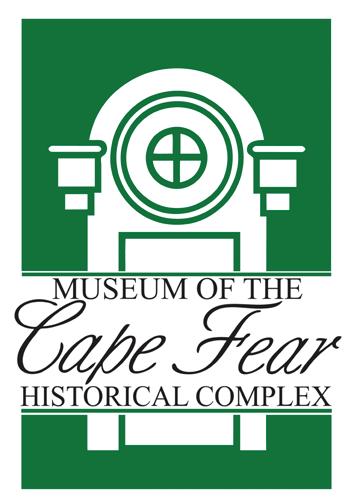
This traveling exhibit from Preservation North Carolina “reveals the extraordinary stories of more than two dozen builders, craftsmen, and architects responsible for the construction of some of North Carolina’s treasured landmarks. Spanning more than three centuries, We Built This provides personal profiles and historic context on key topics including slavery and Reconstruction, the founding of historically Black colleges and universities (HBCUs) and Black churches, Jim Crow and segregation, and the rise of Black politicians and professionals.” This exhibit is brought to the MCFHC by the efforts of the Museum of the Cape Fear Historical Complex Foundation Inc. and the River Jordan Committee on African American Heritage.
Event:
Halloween Revels: Night Tours of the 1897 Poe House * October 19—21 & 26—27, 2023, 6:00—10:00 p.m.
For this annual event, the museum partners with local actors to present 20-minute tours featuring a scripted performance throughout the Poe House. Admission charged. Advance tickets required.
Event:
Trick or Treat at the 1897 Poe House* Saturday, October 28, 2023, 11:00 a.m.—4:00 p.m.
Halloween fun for children 12 years old and younger. This event traditionally features a scavenger hunt, carnival games, a Halloween dance party, magic tricks, and hayrides. Costumes recommended; free treat bags for children.
Exhibit:
e Gateway
16
Affiliate Museums - Museum of the Cape Fear Historical Complex
Victorian Christmas
November 21, 2023—January 1, 2024
1897 Poe House will be decorated for the Christmas season in Victorian fashion. Costumed tours provided on select days.
Event:
Holiday Jubilee at the 1897 Poe House*
Sunday, December 3, 2023
1:00 5:00 p.m.
Enjoy a Christmas carol concert on the front porch of the 1897 Poe House. Poe House open house, a scrap ornament making workshop, and perhaps a visit from Santa Claus!
Exhibit: United States Colored Troops
A special traveling exhibit will be on display from mid-January until the end of May, 2024.
History-to-Go Boxes*
Each month, the museum offers free take home activity boxes for children. A new theme is offered on the first Tuesday of each month and boxes are available as long as supplies last.
* These events are supported by the Arts Council of Fayetteville/Cumberland County
Exhibit:
Journey Stories
Saturday, October 21, 2023
4—7 p.m.
Event:
For more information about events and exhibits at the Mountain Gateway Museum, visit mgmnc.org
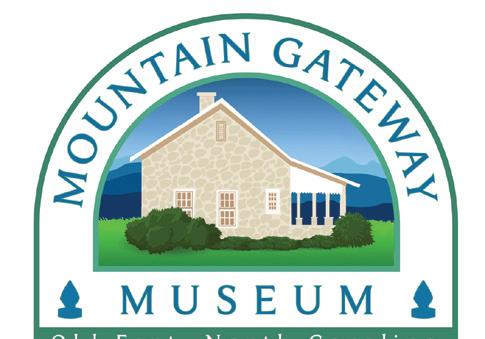
So Long To Summer Street Dance
Saturday, September 9 4—7 p.m.
Bid summer farewell at the Mountain Gateway Museum & Heritage Center’s “So Long to Summer Street Dance” on Saturday, September 9, from 4 to 7 p.m. on Water Street in Old Fort.
Ulysses Long, a 2012 finalist in NBC’s Americaʼs Got Talent show, will perform live with his keyboard at the free event, which will feature beach-music favorites, past summertime hits, and shagging in the street. A dance instructor will be available, and Carolina Snowie will offer refreshing treats.
Journey Stories, a traveling exhibit from the Smithsonian Institution’s SITES program that focuses on Americans’ mass movements, will open at MGM on Saturday, October 21, for an eight-month run. Panels featuring human migrations in western North Carolina will supplement this exhibit.
Event:
Annual Wreath-Making Workshop
Saturday, November 18
On Saturday, November 18, MGM will kick off the holiday season with two sessions of its annual wreath-making workshop, featuring live greenery, Christmas music, and a crafts teacher. The museum’s Christmas Open House and Luminaries Lighting is set for Saturday, December 2, following Old Fort’s 4 p.m. Christmas Parade.
in part by contributions from businesses and individuals, and through grants from the City of Fayetteville, Cumberland County, and the North Carolina Arts Council, an agency of the North Carolina Department of Natural and Cultural Resources. Matching funds are provided by the Museum of the Cape Fear Historical Complex Foundation, Inc.
Exhibit:
A Peek Into the Past: Old Fort at 150
MGM will continue its year-long celebration of the town of Old Fort’s sesquicentennial with phase two of its photography exhibit A Peek Into the Past: Old Fort at 150. Extended through February 2024, this free exhibition showcases the people, businesses, and organizations that helped forge the former frontier town.
Event:
“Spring Green” craft workshop
Saturday, March 23, 2024
Just in time for Easter, MGM will host its first “Spring Green” craft workshop on Saturday, March 23. Hats, baskets, and garden goodies will be part of the event. Pre-registration will be required.
Exhibit:
A Place at the Polls
Saturday, April 6, 2024
On Saturday, April 6, MGM will debut A Place at the Polls, the first of three in-house exhibits planned as part of DNCR’s “America 250 ” initiative, beginning in 2024. This exhibit will examine how voters’ rights have evolved in the United States, particularly in North Carolina’s mountains.
17
Continued
King Charles II & The Making of Carolina
By Don Pendergraft, Director of Regional Museums
The recent coronation of Charles III was a historic spectacle watched by people around the world. Why do we as Americans and North Carolinians care about the British monarchy?
About 360 years ago in 1663, the Albemarle region and North Carolina were born. King Charles II was back in control of the British government, Great Britain, and the colonies. He was interested in establishing a greater British presence on the Atlantic coast of North America. The British government had experienced a coup, resulting in the English Civil War and the conversion of political systems from royal rule to a republican government. The former king, Charles I, had been deposed and beheaded in 1649. The next in line to be king, his son young Charles II, fought and lost the war to continue ruling as sovereign monarch. He escaped and lived in exile in France, the homeland of his mother, remaining there for nine years during the civil experiment to govern without a royal ruling class.
Oliver Cromwell, the leader of the new republican regime, banned most traditional holidays including Christmas and Easter, closed the theaters, and forbid any form of gambling. Taxes were increased to fund a larger army to quell unrest. This made it difficult to govern and to prosper. The attempt failed miserably, and popular opinions and powerful men prevailed. The royals were brought back to rule, known as the Restoration.
Charles II rewarded the men
responsible for his return to power. These eight men were recipients and benefactors of Charles’s gratitude. They are known as the Lord Proprietors. The Carolina Charter was created to officially grant them new territories via the Crown. This rare document is in the collection of the State Archives of North Carolina with a portrait of Charles II painted in the heading.

The states of Northand South Carolina were named after the Latin derivative of Charles (Carolina), which goes back as far as Charlemagne (747–814).
The Albemarle region was granted to George Monck, an English general of the army; he helped end the rule of the Republican Roundheads and restored Charles to power. Charles II bestowed on Monck the royal title Duke of Albemarle, a Norman title and duchy established by William the Conquer after his 1066 conquest of England.
e Gateway
Feature
THE CAROLINA CHARTER, 1663 This royal document granted lands to the eight Lord Proprietors. Charles II’s portrait appears in the heading. Courtesy Collection of North Carolina Archives and History
18 Special Feature
The Lord Proprietors were appointed to help colonize America. They proved to be poor managers of the territories, making land grants to entice settlers into the Albemarle and North and South Carolina. They dealt with the colonists as serfs and collected quit rent, a tax paid in lieu of required feudal services. This created confusion and conflicts between Indigenous tribes who had been living on their tribal lands for thousands of years and the recent immigrants from Virginia, who drifted “into the Southward,” the common name for land south of Virginia, below the Dismal Swamp on fertile lands around the Albemarle Sound.

A Few Interesting Facts about Charles II
The English called him the Merry Monarch because of his tolerance of different religions; love of the arts, sports, and hunting; and skill as a horseman. He enjoyed attending and sponsoring many extravagant parties and events. He was a trendsetter and stylish dresser and began the fad of wearing wigs. He loved dogs so much that they were present at formal meetings of state, thus the breed King Charles Cavalier Spaniel is named in his honor. Charles II was the third ruler to ascend the English throne from the Scottish House of Stuart.

Diana, Princess of Wales, is a descendant of King Charles II. Prince William, should he ascend the throne, will be the first monarch to be a blood descendant to him.
Visit Our Story: Life in the Albemarle, the chronological gallery of the museum. It contains the history of the Proprietary Period, the beginnings of North Carolina. “LORD PROPRIETORS
” MAP, 1673, JOHN OGILBY (ENGLISH 1600-1676), A NEW DESCRIPTION OF CAROLINA BY ORDER OF THE LORDS PROPRIETORS, LONDON
Courtesy Collection of University of North Carolina Library
19
PORTRAIT OF GEORGE MONCK, DUKE OF ALBEMARLE, 1665-66 BY SIR PETER LELY Courtesy National Portrait Gallery, London
Special Feature
President’s Report
By Johny Hallow, FOMOA Board President

Civil War and Reconstruction eras in North Carolina. This traveling exhibit will be on display at the museum until February 17, 2024.
lthough we are more than halfway through 2023, the Museum of the Albemarle has already had an outstanding year with several successful events. I continue to be thankful for the opportunity to serve this wonderful organization and community and to work with a great staff and Board of Directors.
We started the year off with the opening of the traveling exhibit Crossroads: Changes in Rural America. We enjoyed a wonderful evening, learning about the change in rural American communities during the 1900s and hearing from Zane Hedgecock, chief of staff of the North Carolina Department of Agriculture and Consumer Sciences.
In April, we celebrated the opening of another traveling exhibit Freedom! A Promise Disrupted: North Carolina 1862–1901, which depicts the struggle that newly freed African Americans faced to maintain their freedom in the post-
In May, North Carolina Department of Natural and Cultural Resources Secretary Reid Wilson joined us for the unveiling of North Carolina’s newest cultural trail the Moonshine & Motorsports Trail. This cultural trail celebrates both the history and bright future of our state’s distilling and racing industries. The initial phase of the Moonshine & Motorsports Trail will consist of a total of eight locations in 2023. If you have not already stopped by the museum’s trail marker, we encourage you to do so.
We have many other exciting events on our calendar for the remainder of 2023. Please be sure to check out our social media pages to stay up to date on upcoming events and news.
We are proud to announce that our membership has now expanded to 410. We are thankful for all of our members and would love to see our membership continue to grow as we press forward.
Finally I would like to again recognize and thank the museum’s staff and Board of Directors for their continuing hard work and dedication that has led to the museum’s continued success. I am excited to continue to work with everyone to ensure a successful season.
e Gateway
Supporting Regional History FRIENDS OFTHE ■ M U SEUMOF T HE ALBEMA R L E ■ 20 Membership
A
Membership Matters
April 12, 2023—August 17, 2023
Thank you for supporting the museum!
RENEWALS
Individual
• Grafton Beaman
• Margie Berry
• Susan Blackmon
• Veronica Brentjens
• Earnell Brown
• Sharon Burtner
• David Clegg
• Margene Curtice
• Peggy Davenport
• Gary Dunstan
• Dianne Fletcher
• Wendy Flores
• W. Brian Forehand
• Mimi Galgano
• Rhonda Gregory
• Evelyn Henley
• MSG William “Sarge” Hoffman
• Betty Ingram
• JoAnn Jasinski
• Delsie Jones
• Tess Judge
• Joyce Lassiter
• Norma Laughmiller
• Daniel McAuliffe
• Arthur McPherson
• Mable Jean Moore
• Marvyn Siders
• Barbara Snowden
• David Seymour
• Judy Stallings
• Elizabeth Taylor
• Phyllis Timmerman
• Verna Austin Wall
• Peggy West
• Eloise White
• Emily Jennings White
Family
• Bill & Carol Allen
• Ronnie & Donna Baker
• Bill & Chris Barber
• Pernell Bartlett
• Kim & Jack Baumbaugh
• Ron & Mary Black
• Dr. Glen Bowman
• Bernetta, Anthony & Elisa Brown
• Roy & Joan Daniels
• Phil Donahue
• Ed & Nancy Eadie
• Archer & Janet Farmer
• Brenda & Billy Felton
• Bobby & Barbara Fitchett
• Clay Foreman
• Mark & Frances Gass
• Norma Hatot-King
• Harriett & Tony Hornthal
• Carol Jennings
• Eddie & Cindy Jennings
• Penny Leary-Smith
• Joyce & Justina Long
• Bill McCrea
• Rod & Barbara Mueller
• Sean & Catherine Murray
• Jack & Sarah Neal
• Nancy & John Nicholls
• Holly Phelps
• Rebecca Phelps
• Beverly & Reggie Riddick
• Fred & Jan Riley
• Bill & Patricia Sterritt
• Charlotte Underwood
• Faye Ellen Weatherly
• Craig Winslow
Patron
• Gretchen Blacksmith
• Phyllis Bosomworth & Jim Watson
• Dewey & Pat Burgess
• Lee Culpepper
• Peter & Cynthia Erickson
• Sharon Greene
• Linda Hofler
• Alden & Patty Hoggard
• David & Jane Harris
• Becky Harrell
• Chris & Monica Harty
• Doris Hawkins
• Ken Howard
• Blair & George Jackson
• Sam & Janet Jones
• Sarah & John Pugh
• Mary Ann & Barry Keyes
• Jeanie Lefler
• Don & Mary Lee Kosik
• Tom & Margaret Newbern
Membership 21 MuseumOfTheAlbemarle.com
Membership
• Joyce Reitz
• Julie & Harry Robinson
• Corrina & Chris Ruffieux
• Bren O’Sullivan & Joe Inqui
• Anne Sanders
• Di Small & Neal Blinken
• Barbara Snowden
• Ethen Sutton
• Turner Sutton
• Wayne & Dee Talley
• Lee & Judy Vassar
• Paul & Joyce Wheeler
Sponsor
• Al & Min DelGarbino
• Kurt & Bobbi Hunsberger
• Robert & Elana Muir
• Herb & Annette Small
Lifetime Members
• Hilton & Mary Leigh Barrett
• Arthur & Patti Bergman
• Anna & Bruce Biggs
• Karl Brandspigel & Nita Coleman
• Geoff & Penny Byrd
• George Converse
• Carol & Ed Cowell, Jr.
• Brenda & Terry Daniels
• Sam & Faye Davis
• Col. Bill & Susan Davis
• Oliver & Linda Etheridge
• Joe & Judy Evans
• Nancy Ferebee
• Jo Ann Foreman
• Creig & Karen Foreman
• Dr. Linda Fusco
• Doug & Diana Gardner
• Dorsey Harris
• Edwin & Diana D. Hardison
• Flint & Janet Harding, Jr.
• James & Jackie Hathaway
• Dr. Karen Ray & Dr. John Hill
• Chad Hull
• Russ & Courtney Hull
• Maughan & Kay Hull
• J. Wilson & Margaret Jones, Jr.
• Buddy & Beverly Madrin
• Dr. Charles & Brenda Mahaffey
• Mark & Lil Maland
• Cynthia & Joe Mastro
• Michael & Sherri McDaniel
• Ed & Claudia Merrell, Jr.
• Hunter Foreman Michael
• Nancy Bailey Muller
• Kirk & Anita Oldham
• Charlotte Patterson
• William Parker, Jr.
• Chris & Whitney Paullet
• Dr. Anne Marie Radke
• Tapp & Charlie Robinson
• Matt & Breanne Scribner
• Norman & Susan Scurria
• Beverly Small
• Mark & Stacy Small
• Dr. Benjamin Speller, Jr.
• Marvin Stokley
• George & Mary Thomas
• Jim & Jo Thomas
• Bob & Judy Thorne
• Mary Tirak
• Byrum Charitable Trust
• Barbara & Leo Wachter
• Katherine Wassink
• Jimmy & Mary Jo Westbrook
• Dian Williams
The Gateway Fall/Winter 2023 - Vol. 47
22
Sponsor Recognition


The Friends of the Museum of the Albemarle (FOMOA) is a non-profit support group that seeks to raise awareness and provide funding for exhibits, educational programming, and artifact conservation throughout the 13 county region that we serve. The counties served are Bertie, Camden, Chowan, Currituck, Dare, Gates, Hertford, Hyde, Northampton, Pasquotank, Perquimans, Tyrrell, and Washington. The Museum of the Albemarle is the recipient of all funds raised.

ELIZABETH CITY FOUNDATION Museum Gift Shop
Come for a visit...




Take home a regional memory.



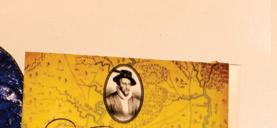

Visit the Museum Gift Shop for a selection of gifts to suit every occasion, most are handmade by Albemarle Craftman’s Guild members. Here you’ll find books about the region, culinary items, and USCG souvenirs. The shop is full of rare and beautiful gifts, wrapping is included with purchases.
Museum Members receive 10% discount on some items!





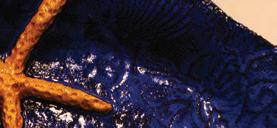



Remember to attend the Albemarle Craftman’s Fair held in the museum, October 27-29!!!
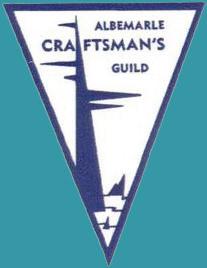

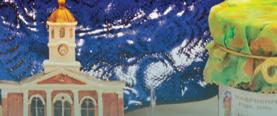



















With a variety of spaces available for rent and an attractive and convenient downtown Elizabeth City location, the museum is an ideal choice for almost any event; including business meetings, corporate dinners, community events, performances, wedding receptions, holiday parties, and family reunions.

m u seum of t h e albem a r l e friends ofthe Supporting Regional History Make history a part of your special event. Make your event ...an elegant affair. Reserve Today & Say I Do to History (252) 335-1453 Experience • Explore • Engage
23
Experience • Explore • Engage

Museum Hours
Monday—Saturday, 10 a.m.—4 p.m.
Museum Gift Shop
Monday—Saturday, 10 a.m.—4 p.m.
Museum of the Albemarle
501 South Water Street, Elizabeth City, NC 27909




(252) 335-1453

MuseumOfTheAlbemarle.com







Facebook.com/MuseumOfTheAblemarle
Twitter.com/moaecity


Instagram.com/moaelizcity
YouTube.com/c/museumofthealbemarle

Free admission
From the Past Picture








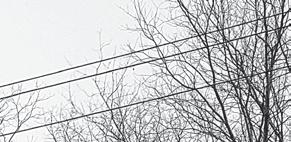
Nonprofit Organization US Postage PAID Elizabeth City, NC Permit No. 43
HANNIBAL BADHAM JR. HOUSE, built circa 1900
Representations of this family of Black master craftsmen’s distinct style of architecture are found in homes, schools, and churches in Edenton. Miles Badham (circa 1811–1870s) passed along the craft to his son and grandsons. The image is part of the Crafted from Wood exhibit.
Courtesy North Carolina State Historic Preservation Office, Tim Buchman, and Preservation North Carolina
MuseumOfTheAlbemarle.com Please recycle.




















 A PHOTOGRAPH OF A FREEDMEN’S SCHOOL IN NEW BERN, TAKEN BY JOHN D. HEYWOOD, circa 1868 Courtesy Collection of the Smithsonian National Museum of African American History and Culture
A PHOTOGRAPH OF A FREEDMEN’S SCHOOL IN NEW BERN, TAKEN BY JOHN D. HEYWOOD, circa 1868 Courtesy Collection of the Smithsonian National Museum of African American History and Culture












 By Wanda Lassiter, Curator
By Wanda Lassiter, Curator















 JOSEPH E. BRITTLE LADDERBACK COMMON CHAIRS,
Courtesy Museum of the Albemarle
ANGELA CACACE, 2023
Courtesy Angela Cacace
JOSEPH E. BRITTLE LADDERBACK COMMON CHAIRS,
Courtesy Museum of the Albemarle
ANGELA CACACE, 2023
Courtesy Angela Cacace








 By Paul Vincent, Contributing Researcher
By Paul Vincent, Contributing Researcher













































































